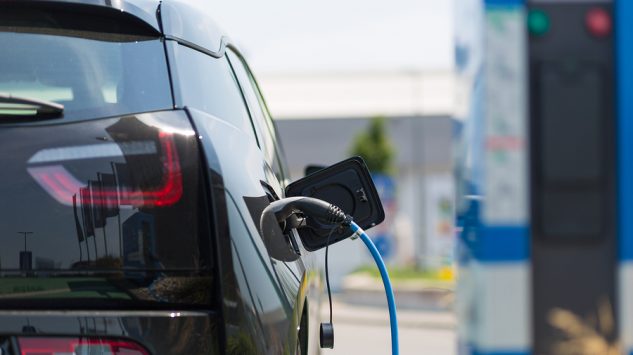Issue Briefs

Electric Cars? Better Invest in a Horse
By Martin Hutchinson
October 11, 2017
Britain intends to ban the purchase of internal combustion and diesel engine cars in 2040, hoping to make everyone switch to electric cars, (EVs). California, China and France all have similar schemes in place. These government decisions naturally provide yet another implicit subsidy to Tesla Motors (Nasdaq:TSLA) whose first quarter’s production of its latest “mass market” model totaled a magnificent 260 machines. For those of us needing reliable transportation for work or shopping, it may be time to invest in a horse.
Tesla is not profitable
Whatever the future of electric cars, one thing we can be sure of: Tesla will not be in business by 2040. Instead, the manufacturers of electric cars in 2040 will be very much the same names you see today in the petrol automobile market, maybe with a couple of Chinese outfits thrown in. Now that General Motors is planning a line-up of 20 new electric models by 2023, the future belongs to companies that actually have the capability to manufacture and sell automobiles, as distinct from gigantic subsidy-driven vanity projects.
Creature of government subsidies
Tesla has from the beginning been a creature of government subsidy and leisure class vanity, making the kind of automobiles that Thorsten Veblen might have designed as a moral example. Having proved itself incapable of scaling up production effectively or of controlling costs, Elon Musk’s dream now faces a bleak future in which the White House is controlled by its political opponents for at least four years, causing the subsidy spigot, essential to the company’s survival, to drip at the best rather than gush.
Add the likelihood of a substantial recession within the next 18-24 months, and the entry into the electric automobile market of a myriad of huge, well financed, manufacturing-savvy competitors, and Tesla’s fate is inevitable. For us free-marketers, one is reminded of Oscar Wilde’s line on Dickens’ maudlin over-sentimentalized “Death of Little Nell:” A man will need a heart of stone not to laugh at the bankruptcy of Tesla Motors.
Governments impose products on consumers
We must not however suppose that the impending bankruptcy of Tesla will mean the end of the electric car industry. Governments have frequently shown their ability to force markets into a direction that they would not naturally follow, generally at astronomical cost. The most recent example of this is in incandescent light bulbs, subject to a tsunami of regulatory hatred in 2006-07.
Governments appeared at one point to have forced consumers to use the grossly inferior CFL light bulbs, which gave out a sickly yellow light, at far less intensity than their official rating, perished as quickly as incandescent (while costing about 10 times as much) and were so full of toxic substances that if you threw one away, the environmental Thought Police would be round on your doorstep within hours.
Fortunately, before the forced transition to CFL was gloomily complete, the blessed free market came up with a solution, via LED bulbs. LED bulbs were much closer to the light emission they were rated, gave light of a decent quality (if you bought good ones) and, blessedly lasted at least some substantial fraction of 25 years in use so that the unpleasant and mildly dangerous job of changing a light bulb became much less frequent.
Governments thus achieved their objective in banning the incandescent light bulb –LED bulbs are both most energy-efficient and more materials-efficient, since they last longer. GE, which paid off legislators to get the original legislation passed, on the other hand did less well. They closed their incandescent light bulb plants in the United States, as they wanted, but the gigantic CFL plant in China with which they were going to dominate that market has proved a white elephant, and their dominance in LED light bulbs has so far been much less significant than it was in incandescent. So the story is not without useful moral lessons.
Can governments “force” consumers to buy EVs?
This does not mean, however, that governments are going to succeed in forcing consumers to transition to electric cars. You would not imagine that voters cared much about light bulbs, but there is considerable evidence that the 2007 legislation banning incandescent electric bulbs, as it came into effect, was a major factor in the rise of the Tea Party and the Republican takeover of Congress in 2010.
Automobiles, on the other hand, are the largest single consumer durable purchase most people ever make, and are of great psychological and practical importance to them. It is thus very unlikely indeed that governments will be able to revolutionize people’s automobile buying habits without a massive voter backlash, sufficient to put an anti-electric, populist President into the White House, even if the current incumbent has been replaced by then. The same is most likely true in other countries in which the government attempts to switch the public to electric cars, even where their cultures are naturally more deferential to authority.
EVs are too expensive
The reason for this is that electric cars are an inferior product, and will continue to be, at least for some time. They remain very expensive – Tesla is failing to make money selling them for $70,000 and up, even with the subsidies of $10,000 per vehicle or more available from Federal and state sources. However, that is not their only disadvantage. They require power from the grid, in large quantities, to keep them running. While the range of a Tesla Model S is said to be 330 miles, you cannot rely on anything like this in traffic, so the risk of being stranded with a dead battery is high.
EVs draw too much power from the grid
The real problem with electric automobiles is that they require to draw large amounts of power to recharge their batteries from electric grids that in most countries have no excess supply available.
Were they to become a true mass market product, they would cause brownouts all over the world. Germany is the most spectacular case; there the government intends to take its nuclear power stations off line in 2022, interestingly the year before General Motors will have an “all-electric future” available.
Since coal fired power stations are genuinely more polluting than automobiles, and nuclear power stations are now impossible to build thanks to the environmental lobby, this does not leave many options for building the vast array of power stations that an electric car fleet will require.
Keep gasoline powered cars in reserve
With electric cars being difficult to recharge – and indeed entirely useless every time there is a power cut, which will be frequently — even those families who for environmental or subsidy reasons buy an electric automobile will make sure to have an old petrol driven banger in the garage for when something goes wrong. The push to an all-electric automobile industry will thus add massive costs to the global economies, and be entirely ineffectual in achieving the “global warming” mitigation that its advocates desire. For one thing lithium mining, apart from being environmentally nasty, also itself generates a considerable amount of greenhouse gases.
GM will make subsidized cars
General Motors may therefore find that its “all electric future” is far less profitable than it imagines, though doubtless it will manage to sting various unfortunate sets of taxpayers for much of the cost of constructing the necessary facilities. Doubtless some clever Chinese manufacturer will make the real money, producing modest petrol-driven automobiles for use when the beautiful electric chariots have flat batteries.
Get a horse
Of course, the crazed governments may by 2040 ban the use of petrol-driven automobiles altogether, forcing us all to rely on the balky, unreliable new electric cars. In which case, there will only be one solution available: it will be time to invest in a horse. At the cost of piles of horse droppings all over the streets, cities will then revert to the noisy, malodorous inefficiency of the nineteenth century. Productivity growth has been more or less stopped by crazed monetary policy and regulation in the last decade; but productivity is not everything. By reverting 150 years, horse users will at least be able to avoid being stranded altogether.
 Martin Hutchinson is a GPI Fellow. He was a merchant banker with more than 25 years’ experience before moving into financial journalism. Since October 2000 he has been writing “The Bear’s Lair,” a weekly financial and economic column. He earned his undergraduate degree in mathematics from Trinity College, Cambridge, and an MBA from Harvard Business School.
Martin Hutchinson is a GPI Fellow. He was a merchant banker with more than 25 years’ experience before moving into financial journalism. Since October 2000 he has been writing “The Bear’s Lair,” a weekly financial and economic column. He earned his undergraduate degree in mathematics from Trinity College, Cambridge, and an MBA from Harvard Business School.
This article was originally published on the True Blue Will Never Stain http://www.tbwns.com
The views and opinions expressed in this issue brief are those of the authors and do not necessarily reflect the official policy of GPI.